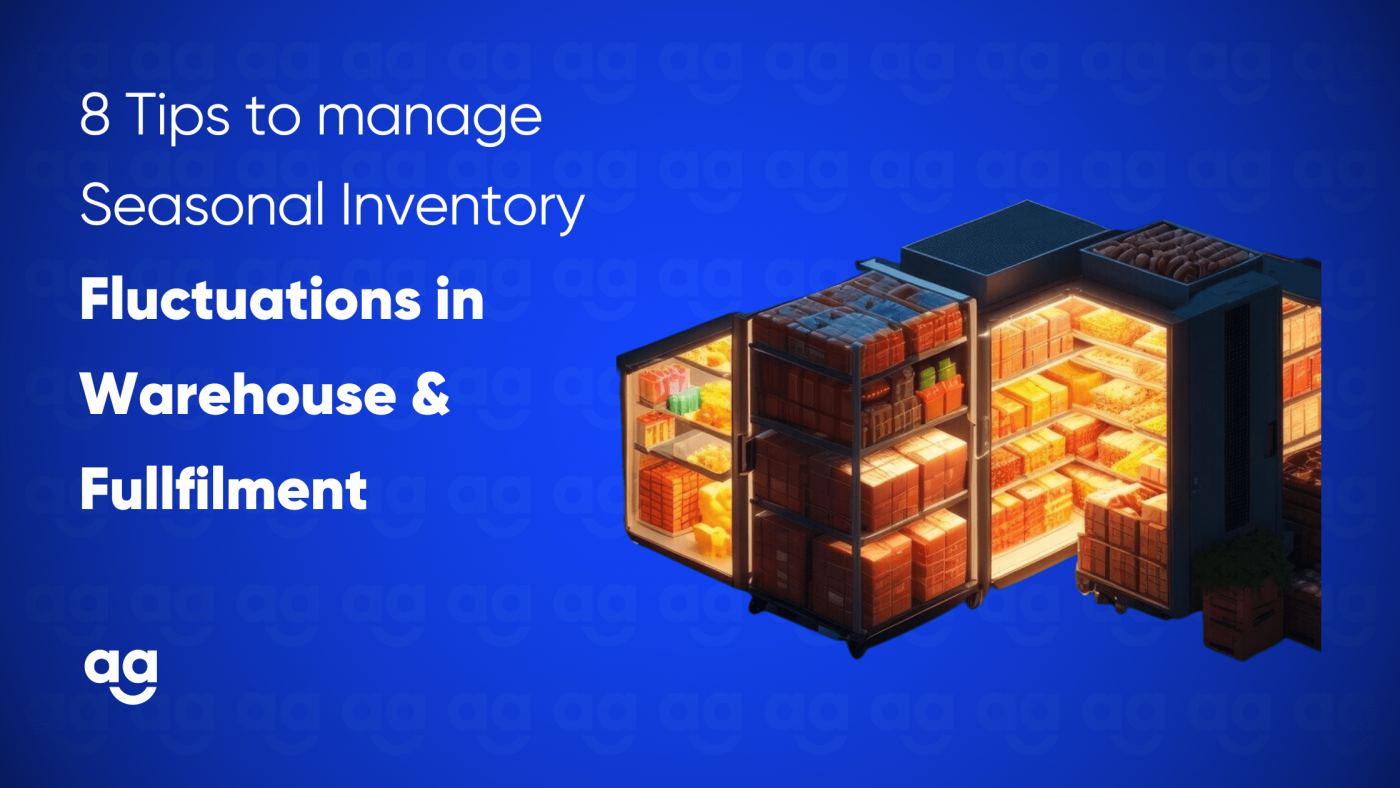Introduction
Picture this: you’re dealing with seasonal inventory fluctuations in your warehouse or fulfillment center. You take the time to optimize your inventory levels, spending money and time in the process.
Now you’ve got too much inventory. But do you know what you can do to manage it and why it is important?
There are many things you can do, and here we will uncover 8 ideas for dealing with seasonal inventory fluctuations.
Manage Seasonal Inventory Fluctuations in Warehouse Logistics and Fulfilment
Inventory is one of the most crucial aspects of the supply chain. The global supply chain industry is massive, with a market revenue of $15.85 billion, and will reach a CAGR of 11% by 2027.
It is important to have the right amount of product at the right time to meet the demand.
There are several challenges that retailers face today, including managing seasonality, inaccurate forecasting, lack of prioritization, and difficulties in forecasting for variations in sales.
Let’s unveil the seasonal inventory management tips:
Understand Your Inventory
The first step towards effective inventory management is understanding your business needs.
What products do you sell? Are they seasonal or non-seasonal? How often do they sell? How long does it take for an order to be processed?
These questions need answers so you can set up processes and systems around them.
Forecast and Plan Accordingly
You can plan for seasonal fluctuations by setting up an automatic replenishment process for each product line during slow periods.
Make sure you plan and prepare for changes by setting up an automated process to restock each product line when sales are slow.
Once you have predicted the demand for each item, adjust your inventory levels accordingly. This adjustment is done based on factors like storage costs and lead time so that you don’t run out of stock before peak season or have excess stock left over after it ends.
Monitor and Track Your Inventory Levels
It’s crucial to keep an eye on your inventory levels to ensure you have stock to meet demand during seasons or high sales periods.
Regularly tracking your inventory will help you identify any shortages or surpluses. This practice will also help prevent buying too much or too little, which can result in lost revenue if not managed properly.
Enhance Communication with Managers and Employees
Managers and employees must have an understanding of how the business operates during peak seasons.
This knowledge will help them avoid any bottlenecks or problems. Hence, it can avoid missed sales opportunities or customer complaints caused by delivery delays or damaged goods.
Effectively Manage Your Warehouse Space
Warehouse logistics and inventory management play a role in every business. It’s important to store your products in a manner that ensures that your employees can easily find the items for shipping.
Additionally, you need to prioritize the safety of the warehouse and its contents by taking measures against theft, damage, and other risks.
Consider implementing types of shelving systems that allow you to maximize storage capacity while minimizing floor space usage. This approach enables you to store items on a shelf efficiently.
Update Warehouse Layout Designs
Revise the designs for your warehouse layout to cater to different products that will be required during different seasons. It’s important to maintain flexibility to accommodate needs like returns processing and picking orders.
To ensure efficiency in your warehouse and fulfillment processes, it is crucial to have a thought-out layout plan that considers the movement of inventory and aligns moving equipment and processes accordingly.
Adjust Workforce Levels for Seasonal Changes
One effective solution for handling warehouse inventory fluctuations is to manage the workforce. This can be achieved by utilizing software that tracks and manages labor costs, such as overtime and part-time hours.
The software can also provide insights into which employees are available during peak periods and when they can resume their regular working hours after the busy season.
Ease Seasonal Demand Shock with Cloud-Based WMS and 3PLs
To mitigate the impact of demand changes, a cloud-based warehouse management system (WMS) along with third-party logistics providers (3PLs) can be instrumental. Implementing a WMS enables monitoring of stock levels to prevent shortages or excess products during peak seasons.
Additionally, it provides real-time data on inventory levels and performance metrics, empowering managers to make adjustments to spending and inventory throughout the year. You can also adjust employee hours based on demand, which will help cut costs during leaner months.
If you’re unsure about how much inventory you’ll need for each season, consider outsourcing some of your warehouse operations to a third-party logistics provider (3PL).
Use 3PLs for last-mile delivery during peak seasons such as Christmas, Diwali, and Mother’s Day. This is to ensure that you can focus on other areas of business during these busy periods and reduce the pressure on your resources and systems during busy times of the year.
Wrapping Up
Planning and anticipating the needs of your business will play an integral role in keeping your inventory costs down. By dealing with seasonal fluctuations up front, using some of the strategies that we’ve outlined in our eight tips above, manufacturers can ensure that their inventory does not become a burdensome expense.
At Shipyaari, we ensure the highest delivery ratio of up to 99.6% with an optimized warehouse and fulfillment process. Our monthly plans are tailored to your requirements and preferences for a hassle-free supply chain cycle.
Are you ready to get started as a happy year?







 Shipping
Shipping







